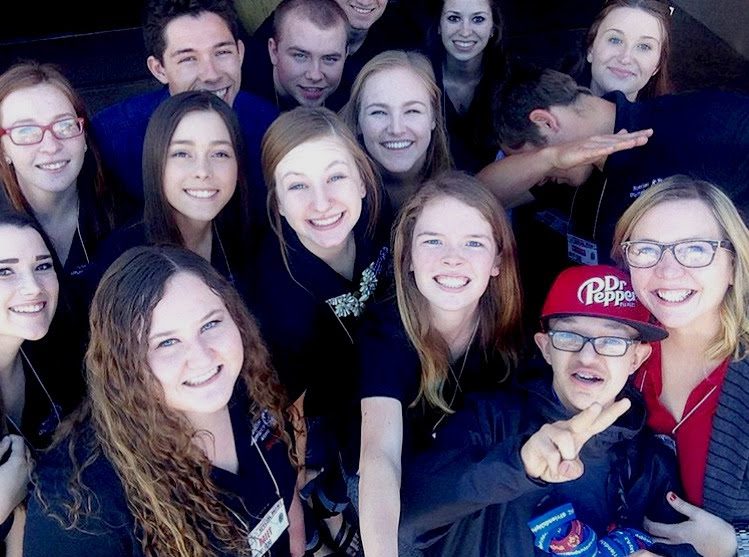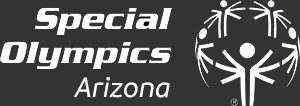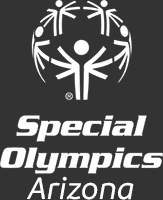
What Is Cerebral Palsy (CP)?
What Is Cerebral Palsy?
Cerebral Palsy is a group of disorders that affect movement and muscle tone or posture and are caused by damage to the developing brain, most often before birth. Individuals with cerebral palsy will generally have recognizable symptoms beginning during infancy or preschool years, such as impaired movement, spasticity of the limbs, and unusual posture and movement patterns. The cause of cerebral palsy and its effects on movement, the mind, and the body vary greatly among individuals with the disorder. The Special Olympics Arizona team is breaking down these disorders: what cerebral palsy is, what symptoms it causes, and treatments for the disorder.
What Is Cerebral Palsy (CP)?
Cerebral palsy is a group of disorders that affect the cerebral motor cortex, which is the part of the brain that directs muscle movement, and cause problems with movement, balance, and posture. This group of neurological disorders will appear in infancy or early childhood and are caused by damage to or abnormalities inside the developing brain that disrupt the brain’s ability to control movement, regulate posture, and other physical abilities. In some cases of cerebral palsy, the areas of the brain involved in movement do not develop as expected during fetal development, and in other cases, these areas of the brain are damaged before, during, or after birth. In both instances, the damage done to the cerebral motor cortex is not reversible, and the disabilities and physical difficulties are permanent.
Cerebral palsy is the leading cause of childhood disabilities, but it does not always cause profound physical disabilities. Some children with mild cerebral palsy may not need any assistance with walking, while others may have more severe cases of cerebral palsy and need special equipment or lifelong assistance with physical activities. Cerebral palsy is not a progressive illness, meaning symptoms do not get worse over time.
Types of Cerebral Palsy
Cerebral palsy is classified by the type of physical movement that affects an individual with the disorder. Individuals can experience one or more types of physical effects, the most common of which are stiff muscles, or spasticity; uncontrollable movements, or dyskinesia; and poor balance and coordination, or ataxia. These are the four main types of cerebral palsy:
Spastic Cerebral Palsy
Spastic CP is the most common type of cerebral palsy, affecting about 80% of the population with cerebral palsy. Individuals with spastic cerebral palsy have increased muscle tone, which causes stiff muscles and results in awkward movements. Within the diagnosis of spastic cerebral palsy, the disorder is often categorized by what part of the body is most affected in the way that it moves:
- Spastic Diplegia: In individuals with spastic diplegia, or diparesis, the increased muscle tone and stiffness are mainly located in the legs. The arms of individuals with spastic diplegia are often regularly toned and not affected as much, if at all, by stiffness. People with spastic diplegia will often have difficulty or an inability to walk due to tight hip and leg muscles that pull their legs together and cause them to bend inward and cross at the knees, known as leg scissoring.
- Spastic Hemiplegia: In individuals with spastic hemiplegia, or hemiparesis, only one side of the body will be affected by the stiff muscles, and usually the arm will be more severely affected than the leg.
- Spastic Quadripalegia: Individuals with spastic quadriplegia have the most severe form of spastic cerebral palsy, in which all four limbs, the trunk, and the face are affected by stiff muscle tone. Individuals with this type of spastic CP usually cannot walk and may have other physical issues such as seizures and vision, hearing, or speech problems. It is also common for these individuals to have intellectual disabilities or deficits.
Dyskinetic Cerebral Palsy
Individuals with dyskinetic CP have difficulty controlling the movements of their hands, arms, feet, and legs, making walking and sitting very difficult. The movements associated with dyskinetic CP are uncontrollable and may be either stiff and slow or rapid and jerky. Some individuals will have this type of CP affect their face and tongue, making speaking, sucking, drinking, and swallowing very difficult. Individuals with dyskinetic CP have muscle tone that can change constantly, not just from day to day but even throughout a single day.
Ataxic Cerebral Palsy
Individuals with ataxic CP have difficulties with balance and coordination. It is common for individuals to be unsteady when they walk and have a hard time with quick movements or movements that require a lot of control, such as writing. Reaching for things can be difficult, as they can have a hard time controlling their arms and hands when outstretched.
Mixed Cerebral Palsy
Some individuals will have a combination of the various types of cerebral palsy, known as mixed cerebral palsy. The most common type of mixed CP is spastic-dyskinetic CP.
What Are the Signs & Symptoms of Cerebral Palsy (CP)?
Due to the various types and severities of CP, the signs and symptoms vary greatly, especially depending on the stage of life an individual is in. The main sign that a child might have CP is a delay in reaching motor or movement milestones early in life, such as rolling over or sitting up. Other symptoms that can occur are included below, although it is important to note that children who do not have CP may also exhibit some of the below symptoms as part of their normal development.
Babies Younger Than Six Months
If you have a baby younger than 6 months that has cerebral palsy, you may notice that their head lags when you pick them up from lying on their back. They may exhibit signs of being very stiff or floppy. When being cradled in your arms, a baby with CP might overextend their back or neck, as if they are stretching away from you. Their legs may be stiff, or they may cross or scissor at the knees.
Babies Older Than Six Months
If you have a baby older than 6 months who has cerebral palsy, you may notice that they have not begun rolling in either direction. They may be unable to bring their hands together or have difficulty bringing their hands to their mouth. When reaching out to you, they may only reach with one hand at a time while keeping the other hand fisted closer to their body.
Babies Older Than 10 Months
A baby older than 10 months with CP may begin crawling in a lopsided manner, pushing off of only one hand and leg while dragging the other behind their body. They may also not crawl at all, instead preferring to scoot on their backside or hop on their knees.
These signs and symptoms are cause for you to speak with your doctor about the physical movement signs being exhibited by your child, but they are not a sign to panic immediately.
Cerebral Palsy Causes
Cerebral palsy is caused by abnormal development of the brain during fetal development or damage to the brain that affects the cerebral motor cortex. There are several possible causes of the damage or abnormal development. The abnormal development of the brain or damage that leads to cerebral palsy can happen before birth, during birth, within a month after birth, or during the first years of a child’s life. CP related to abnormal development of the brain or damage that occurred before or during birth is known as congenital cerebral palsy. The majority of cases of CP are congenital, around 85% to 95%. Many scientists used to believe that congenital CP was caused by a lack of oxygen during birth, but it has been determined that this accounts for a very small percentage of congenital CP cases, and the majority of cases are inconclusive as to what caused the abnormal development. A smaller number of causes of cerebral palsy are caused by abnormal development of the brain or damage that occurs more than 28 days after birth, which is known as acquired cerebral palsy. This is usually caused by an infection, such as meningitis, or a head injury.
Cerebral Palsy Treatment
There is no cure for cerebral palsy, but there are a wide range of treatment options available. Beginning intervention and treatment as soon as possible after a cerebral palsy diagnosis has the potential to greatly improve the quality of life of individuals with CP, increase understanding of the diagnosis, and make managing symptoms easier. Common treatments for individuals with CP include medications, surgery, braces, and physical, occupational, and speech therapy. No single treatment is a one-size-fits-all solution, which is why working with a team of doctors and specialists to determine what your child needs will be the best option. Early intervention and school-aged intervention are available nationwide by law and can help provide more information on treatment and options for your baby and child as they age.
How Common Is Cerebral Palsy?
Cerebral palsy is the most common physical disability affecting children worldwide. It is estimated that in every 700 births, a child with cerebral palsy will be born, and there are 17 million people worldwide living with the disorder.



